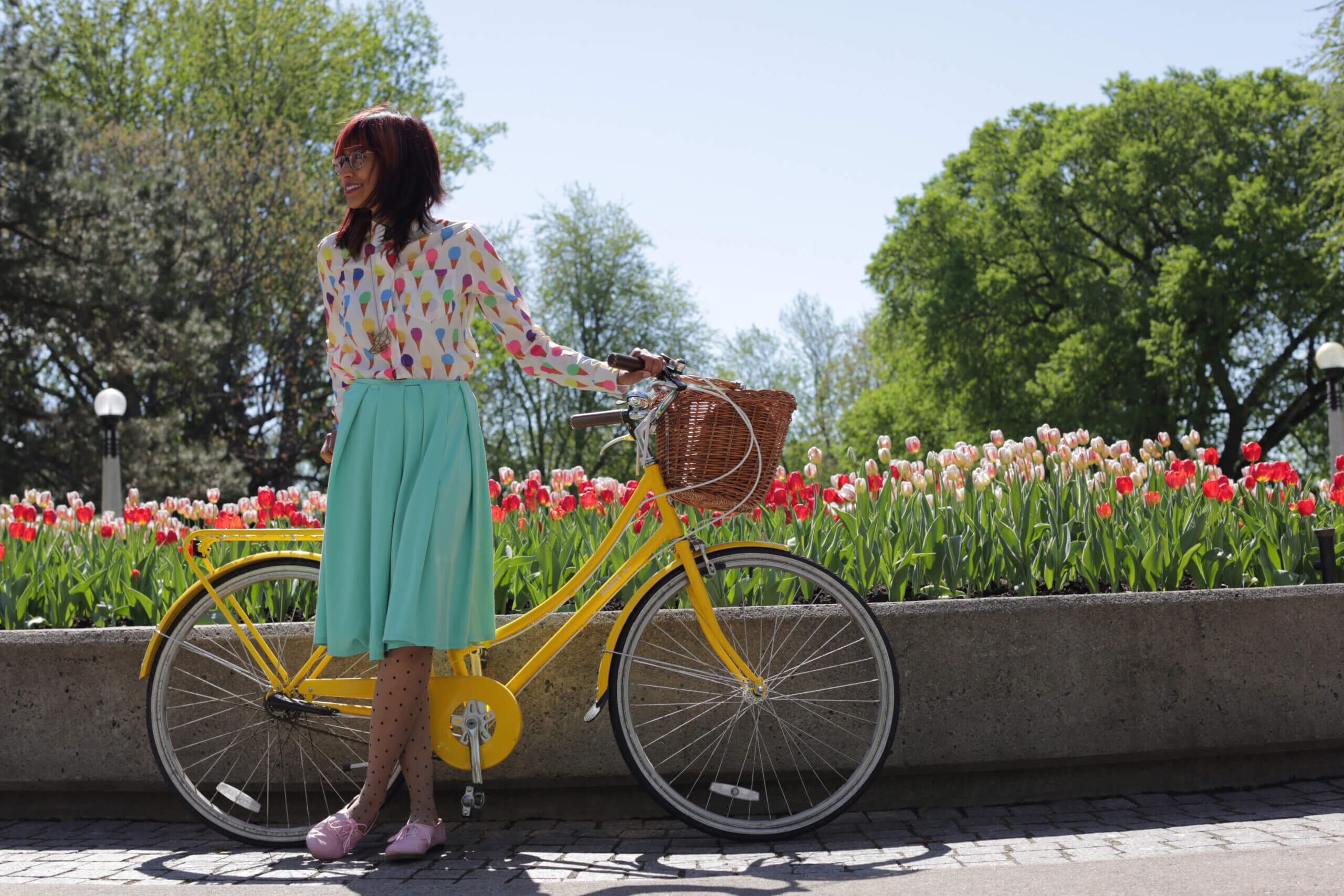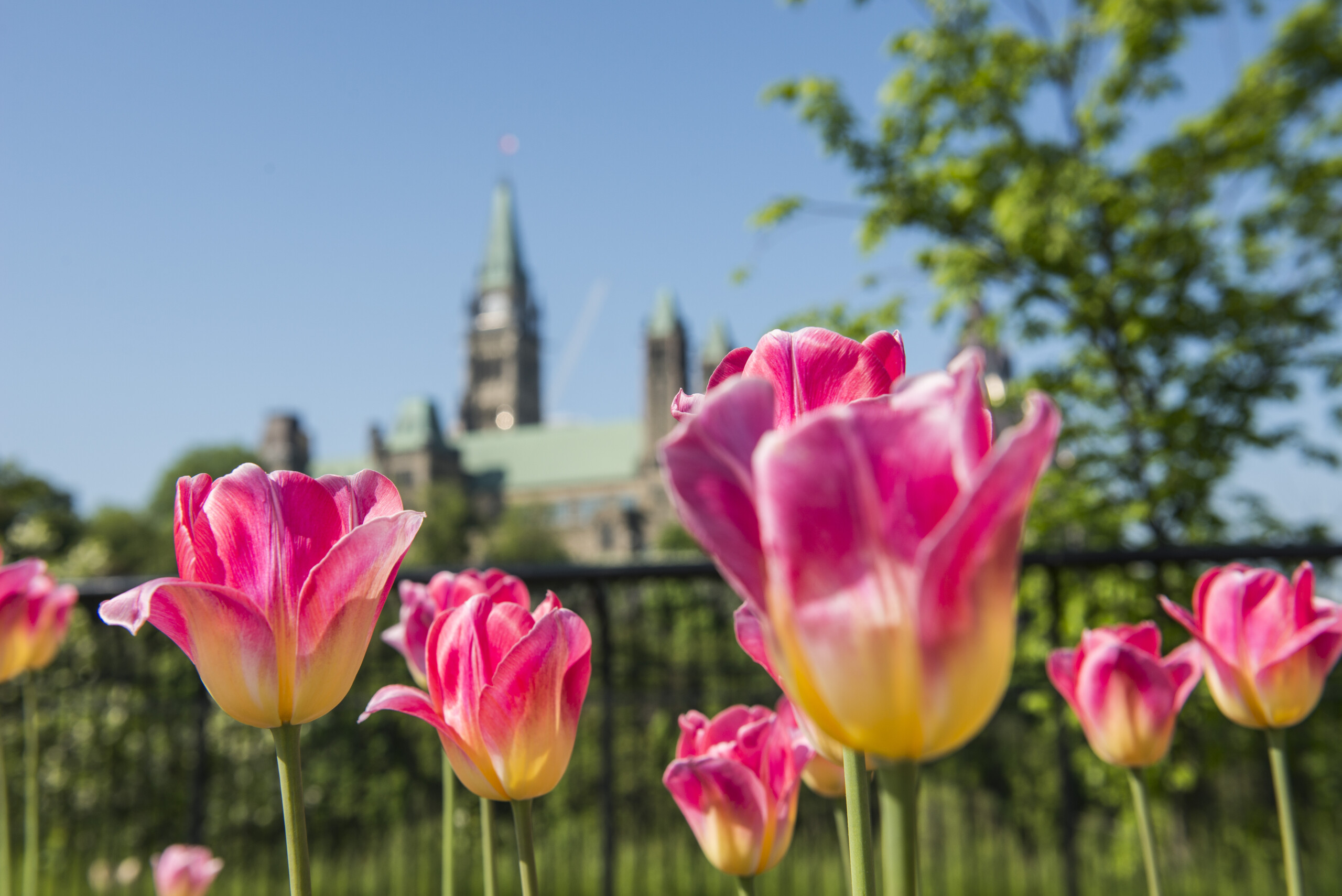5 Fun Facts About Ottawa’s Famous Tulips
Every year, beginning in late April or early May, Ottawa becomes awash in a sea of vibrant colours. For a few weeks each spring, tulips seemingly take over the nation’s capital, with garden beds in many of the city’s parks sporting this one flower type in abundance.
These tulips, planted meticulously each year by the NCC (National Capital Commission), set the scene for the annual Canadian Tulip Festival, the largest of its kind in the world. This year’s festival is set to take place from May 12-22 and if you love tulips, this is a brilliant time to visit the city.
Five Fun Facts About The Tulips
1. Ottawa has ‘helpful’ gardeners
While the NCC meticulously plans the garden beds in the spring and summer, and plants the bulbs accordingly in the fall (usually in mid-October), there are always a few surprises each year when the flowers bloom in May. The surprises come thanks to the work of Ottawa’s resident squirrels, who enjoy digging up bulbs and replanting them out of formation.
2. Tulips have hidden meaning
The tulips are more than just a sign of spring! The tradition of planting tulips began in 1945 with a gift from the Royal Family of the Kingdom of the Netherlands as a thank you to Canada for keeping the family safe during World War II and aiding in the liberation of the Netherlands. Princess Juliana, who went on to become Queen, lived in the city with her family throughout the war. She even gave birth to her third child, Princess Margriet, at the Ottawa Civic Hospital in 1943.
As a symbol of gratitude and friendship, the Dutch government, the Dutch Bulb Growers Association and the Royal family have been sending Canada thousands of tulip bulbs every year since the end of the war.
3. Tulips are Ottawa’s official flower
In 2001, the City of Ottawa declared the tulip its official flower. This makes sense as there are more than one million tulip bulbs planted in Ottawa each year.
Some of the bulbs are left in the ground for a second year, but most are removed. Those that are still viable and can become perennials in the Ottawa climate are donated locally to schools and non-for-profit organizations. The rest are composted to become food for new plants and flowers.
4. Festival is more than 70 years old
The idea for the festival took root in the early 1950 when renowned photographer Malak Karsh suggested the idea to the Ottawa Board of Trade. The first festival took place in 1953.
The festival is held in Commissioners Park each year (although tulips can be found throughout the city) and features many different activities such as walking tours, mini markets, movies in the park and light/sound shows. At night, the tulip beds are lit up and make for a lovely sight on an evening stroll.
5. The variety of bulbs is astounding
According to the NCC, which manages more than 120 flower beds in Ottawa and Gatineau, the total amount of planting area of the tulips is 14,000 square metres — that’s enough to cover about nine NHL hockey rinks.
There are more than 100 different varieties of tulips planted in every colour of the rainbow with the exception of blue. There is no natural blue pigment in tulips.
Where to see the tulips:
If you’re planning to visit Ottawa during May, you can see the tulip displays in a few different areas:
- Commissioners Park has the largest display with nearly 300,000 bulbs in dozens of varieties.
- Major’s Hill Park in downtown Ottawa
- Malak’s Bed in Gatineau, by the Ottawa River behind the Canadian Museum of history.
- Garden of the Provinces and Territories in downtown Ottawa near Christ Church Cathedral
- Montcalm-Taché Park in Gatineau





